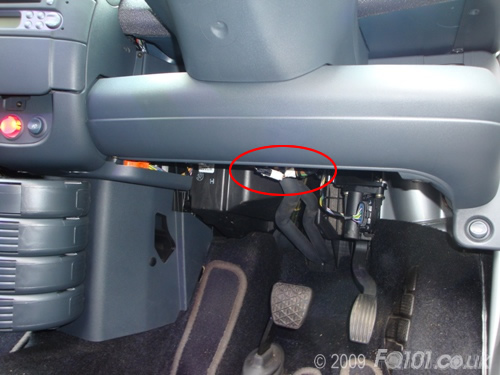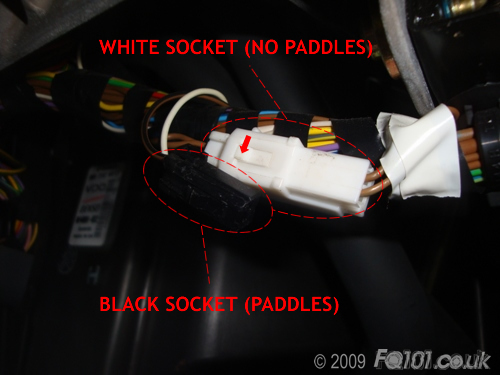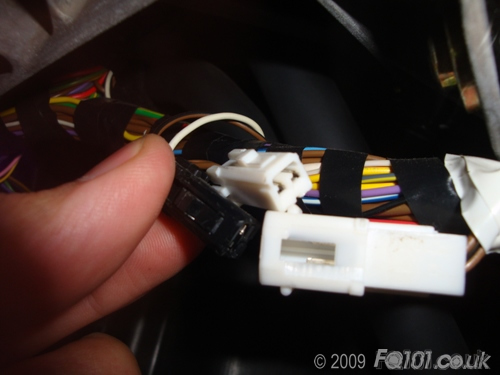Park the car up and make absolutely sure the wheels are dead straight.
Disconnect your battery and allow around 15 minutes before doing anything to wait for any residual charge to disappear.
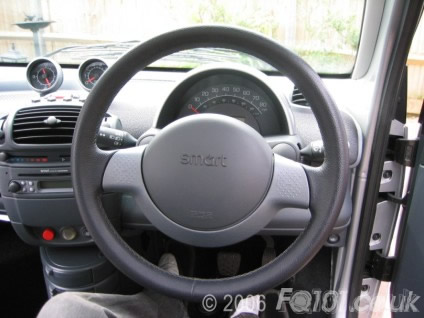
Using a long reach Torx T40 bit, slide it up underneath in the centre of the standard wheel as shown.
Turn the screw anti-clock wise until there is some resistance (this means its on its last few threads)

Carefully pull the old wheel off the spines slowly, just enough to take up the slack in the cables behind the cartridge.

Disconnect the looms with care as the connectors are quite fragile.
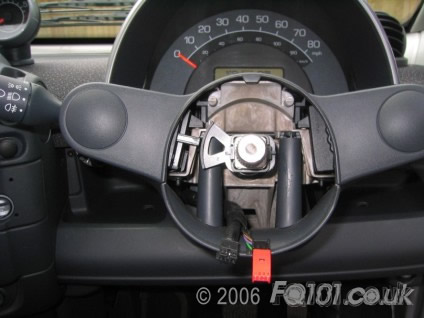
To fit the new wheel you need to feed it onto the spines so its dead straight, reconnect both connectors and line up the two metal locating pins on the car with the two plastic holes on the wheel.
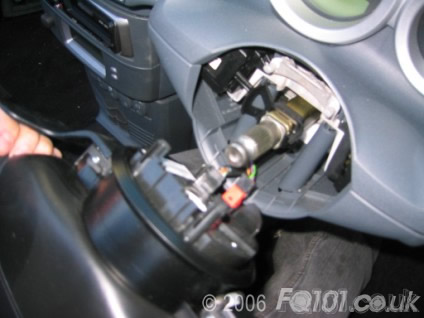
Slide it into place and bolt it back onto the car with the T40 bit.
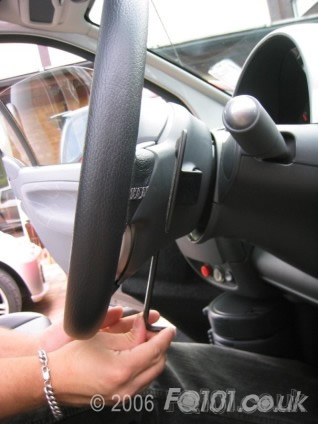
Before you reconnect the battery, you need to do a spot of rewiring - fortunately nothing too drastic. There is a changeover connector under the steering column shown here:
You should be able to see a white connector and taped up near to it will be a lose black connector. Separate the white connector by pushing the tab indicated by an arrow below:
The black connector is exactly the same as the white connector. Simply plug the black one into the white plug.
If you don't do this changeover, you will find that the horn sounds whenever the paddles are pressed.
Reconnect the battery and test that the horn works properly.
If all goes well then everything will work although some cars have issues with accepting the new steering angle sensor and will play havoc with the ESP and ABS, Smart will be able to re-programme this to the car for a fee.
If your car hasn't been TANed then your need to go back to your local Smart dealer to get the paddles activated.

